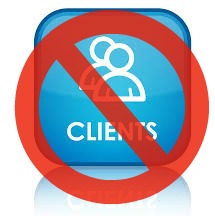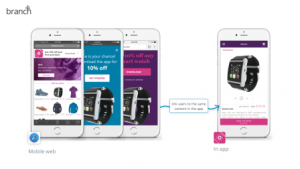Crafting the ideal online presence for your company is much more than a one- to two-step process.
From webpage spacing and keyword choices to color schemes and calls-to-action (CTAs), there are countless individual factors that affect the success of your online marketing.
One of which is your content creation, aka blogging.
The Importance of Blogging
Blogging is a great tool for businesses for several reasons. It’s more than just a call out into the void. It’s an opportunity to educate your customers, provide insight into your culture, and even become a knowledge resource.
Here are some of the key benefits to blogging:
Keep Subscribers Up to Date.
If a visitor has taken the time to convert into a subscriber by filling out the form and regularly reading your posts, then it’s safe to assume that they’re interested in your company.
Blogs can be used to update followers on what’s new in your business. Publish content about current events, recent news, new product rollouts, or even industry insight.
Own your space in your market and use blogging as an opportunity to boost brand awareness for yourself.
Fuel Your SEO Strategy.
Google and other search engines love to feature “valuable” content on their first SERPs. Blogs that follow SEO best practices are seen as more favorable by search engines, which eventually leads to an uptick in organic traffic.
Pay attention to all the SEO details, including strategic keyword placement, ethical link building, and technical SEO.
Establish Yourself as a Thought Leader.
Earning authority in your field is always a great patch to have on your sash.
If you can establish yourself as an industry thought leader, then you’ll start to see an increase in backlinks, referrals from industry peers, and potential customers. People will trust what you have to say and view you as a solution to whatever pain points you target.
Educate Your Subscribers.
We use the term “educate” in a broad way. You can educate about:
- Industry topics
- Your products and/or services
- Pain points
- Solutions you can’t provide
Your subscribers will appreciate receiving free, valuable content that will improve their experience. It may also spark a curiosity for them to do a bit more learning about your business and how you can help them.
10 of the Best Blogging Tips for Beginners
Optimizing your blogging behavior and content quality is an essential part of generating online leads.
No matter how strategically placed your landing pages are or how refined your SEO strategy is, your business will never realize its full potential for online lead generation without strong and suitable content.
To help drive lead generation from your blog, here are 10 tips to follow.
1. Outline Blogging Goals for Your Marketing Strategy.
When creating engaging, lead generating blog content, it’s best to clearly define your goals and outline how you’d like that content to affect other areas of your digital marketing strategy.
What are the intended results of you inbound blogging efforts? What are you trying to accomplish by creating this content?
Typically, inbound content aligns with, and promotes, four general areas of your online strategy:
- Your SEO
- Your social media activity and networking
- Your organic search and pay-per-click (PPC) success
- Lead conversion
The type of content you create will depend on what areas of your marketing strategy you seek the most development. A blog focused on generating contacts will differ from a blog based on pushing existing leads through your sales funnel.
The best and most effective blogs are those designed with clear focus and desired outcomes.
2. Research for the Best Content.
Along with outlining goals for your blog, researching other articles related to your industry and gaining bearings on direction can bring significant benefits to your own content.
Research what works for other sources in your industry, as well as what does not. Use these techniques to improve the ways you format your blogs and present your content. From this research, you’ll have a better understanding of the content you should focus on most.
Don’t disregard all other content, though. Just because one thing might work best in your industry doesn’t mean it’s the only option.
It’s important to have a variety of content on your business blog. You don’t want to make it appear as though you are only good at one thing.
By expanding your editorial calendar to include multiple content types – such as infographics, videos, lists, interviews, etc. – you can stand out as a versatile expert in your industry who offers a wide variety of information to interested leads.
3. Write for Your Target Audience.
Branching off of researching, you’ll want to write about information for your industry. You can expand on certain topics, provide your own twist to an existing idea, offer tips and tricks, or build how-to articles to help guide people through a common issue.
The biggest tip for blog writing to help drive lead generation, however, is to write for your desired customers. At the end of the day, your company has its own niche in whatever industry you work in.
You know the leads you want to receive from your marketing strategy, so hone in on who your buyer persona is and what buyer journey stage your leads might be in, and put yourself in their shoes.
Ask yourself, “If I were a lead interested in this company but I was still on the fence, what content would inform me and inspire me enough to commit?”
4. Employ Attention-Grabbing Techniques.
In many cases, having high quality content won’t be enough to convince targeted users to follow your links and reach your content.
In addition to keywords, your blog post titles should maintain some level of urgency. A potential reader will determine whether or not to follow your links from a search engine solely by how well that title aligns with their search intent and if it hooks their attention.
For a better idea of how to tailor your content and engage new readers with your blogging techniques, consider:
- Creating exciting list-based content, like the format of this very blog article, to identify the main points of your content and renew engagement with each bullet point.
- Building resourceful guide pages and link-based blogs.
- Q&A or “Ask the Experts” sections where readers can contact representatives in your company directly.
- Providing incentives based on immediacy, humor, or enticement.
5. Align Your Blog With CTAs and Marketing Campaigns.
The most effective blogs a company can write are those that align with existing campaigns, calls to action, or landing page offers.
At their best, focused blogs will nurture qualified prospects through your sales process, first from contact to lead, and then from lead to customer.
If you spot any holes when searching for existing landing page offers for a blog topic, consider creating a simple contextual offer for the reader.
A contextual offer is an offer that is super targeted and geared toward a specific pain point for your audience. These offers align closely to the context of the blog article.
By creating unique contextual offers for new blog topics, you won’t only be able to link a relevant resource to your blog post, but you will have something valuable to add to all former and future blogs that touch on that topic.
For the best results with your blogging content, unite it with messages and claims from other pages on your website, especially those presented as inbound links in your blog.
6. Promote Your Content Across All Mediums.
Further generating optimal leads with your blog content will require extensive promotion across virtually all mediums, particularly in social media.
The content creation process doesn’t end with having content. You’ve got to make sure potentially interested audiences can find your content.
Because these audiences will not reach your content through search engine entries universally, one of the best ways to make sure your pages find the largest audiences possible is through social media promotion.
Post and share links to your content on Facebook, Twitter, and LinkedIn.
Consider using your blog content in email marketing techniques as well, as this helps promote your business as an active resource within your industry while also keeping existing contacts up-to-date on new offers.
A best practice for doing this would be to add a “recent articles” section to your emails where contacts can easily find what’s new on your business blog – you never know which contact you will attract with your new content.
7. Use Analytics to Optimize Your Blog.
As you might expect, any inbound marketing campaign is incomplete without in-depth analytics. Making the most of online analytic tools can help you push your blogs to success in ways other techniques can’t.
With online blogging analytics, you can measure the success of your posts in real time. Some great things to track with your blogging analytics are:
- Traffic
- Form completion
- CTA clicks
- Lead conversion rates
Monitoring your blog analytics on a regular basis allows you to identify areas your blogs are excelling in as well as weaknesses they may face, such as poor click-through rates.
Once you get to the analyzing phase, start over. Now that you’ve measured the success of your blogging efforts in a marketing strategy, switch it up and try something new.
8. Guest Blog on Other Sites in Your Industry.
Guest bloggers are a great way to boost brand awareness, demonstrate credibility, and earn backlinks from those that you’ve built relationships with.
By partnering with websites that share or align with your target audience, you can leverage a much larger stage and sound system than if you were singing by yourself on the side of the road.
Depending on the size of your blog’s following right now, you can actually benefit more from working with a larger, more established company who can amplify your knowledge and presence. Think of it as a quick ride on their shoulders.
Earn some extra exposure by guest blogging.
9. Use the Comments Section to Host Discussions.
Having a comments section may not always sound like a great idea because of past eras of trolling, but it’s actually an incredibly valuable space to engage with your readers.
Readers may have valuable insight to share or questions to ask. You gain nothing from ignoring them.
Encourage conversations between you and your readers, and even amongst the readers themselves. You may find something of value and they’ll relish the chance to engage with you and interact in a community.
10. Be Consistent in Everything.
Consistency is key.
If you’ve ever read any of our other posts about blogging, you’ve probably heard that line again and again. Yet, here it is one more time.
That’s how important it is. Your readers will start creating their own expectations of when you post, what you post, how much, and how long.
Of course, you get to design your content strategy and calendar, but meeting those expectations is critical to keeping a following.
Make sure that you’re not throwing curveballs every week or else you risk losing some subscribers who may feel tricked or as if their needs aren’t being met.
Critical Blogging Mistakes to Avoid
As great as blogging can be for your business, there are quite a few different ways that you can screw it up and make it more of a burden than a blessing.
Here are just some of the mistakes to avoid:
- Adopting keyword stuffing
- Using poor blog designs
- Ignoring SEO best practices
- Writing without an outline
- Creating content that won’t convert
- Failing to follow or create an editorial calendar
Effective blogging can take time, but things shift in the blink of an eye – don’t ignore new changes and trends in business blogging. Rather, embrace them and learn to implement them into your own strategy.
When it comes to optimizing your blogging technique – and larger inbound plan as a whole – there are no end-all, be-all solutions.
For the best results, setting out with clear goals and gaining the right understanding of online lead conversion are often the best ways business owners can find success online.
Digital & Social Articles on Business 2 Community
(26)
Report Post




